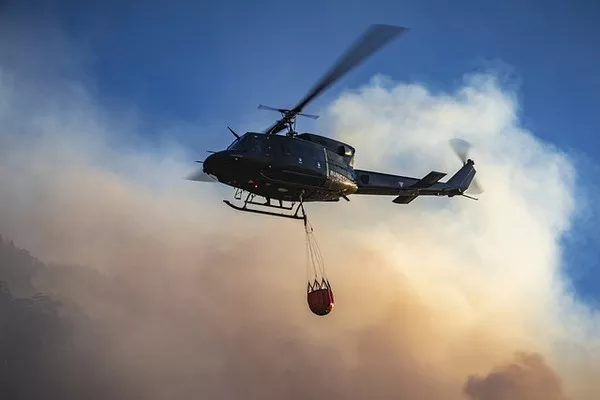Fire safety is a paramount concern in various environments, be it residential, commercial, or industrial. Different types of fires demand specific approaches to control and extinguish them effectively. Class B fires, involving flammable liquids and gases, require specialized fire extinguishers known as Class B fire extinguishers. In this article, we will delve into the characteristics of Class B fires, the science behind their ignition, and the critical role of Class B fire extinguishers in preventing and containing such incidents.
Class B Fires: Characteristics and Causes
Class B fires are characterized by the presence of flammable liquids and gases, including but not limited to gasoline, oil, diesel, alcohol, solvents, and paint. These fires are unique in their behavior and dangers, often spreading rapidly and igniting easily due to the volatile nature of the materials involved. Class B fires are particularly hazardous as they can lead to explosions, endangering lives and property.
The ignition of a Class B fire typically requires three components known as the “fire triangle”: fuel, oxygen, and heat. Flammable liquids provide the fuel element, oxygen is readily available in the air, and heat can come from various sources such as open flames, sparks, electrical equipment, or even static electricity. Understanding these elements is essential in selecting the appropriate fire extinguisher to combat Class B fires effectively.
Class B Fire Extinguishers: The Ultimate Defense
Class B fire extinguishers are specifically designed to tackle fires involving flammable liquids and gases. These extinguishers are labeled with a distinct blue square containing a white letter “B,” making them easily identifiable in emergency situations. They are an essential tool in preventing the escalation of Class B fires and mitigating potential hazards.
A Class B fire extinguisher employs a variety of mechanisms to combat flammable liquid fires:
1.Cooling: Many Class B extinguishers contain agents that lower the temperature of the fuel below its ignition point. This cooling effect helps to halt the fire’s progression by reducing heat.
2. Blanketing: Some extinguishing agents, such as dry chemical powders, create a barrier between the fuel and oxygen, effectively smothering the fire. This prevents the fire from receiving the necessary oxygen to sustain combustion.
3. Chemical Reactions: Certain extinguishing agents interrupt the chemical chain reaction required for fire to persist. These agents can interfere with the combustion process, halting the fire’s spread.
Choosing the Right Class B Fire Extinguisher
Selecting the appropriate Class B fire extinguisher involves understanding the nature of the flammable liquids present and assessing the potential risks. There are different types of extinguishing agents used in Class B fire extinguishers, each with its strengths and limitations:
1.Foam Extinguishers (AFFF): Aqueous Film-Forming Foam (AFFF) extinguishers are effective against Class B fires due to their ability to form a cooling foam blanket over the fuel’s surface. This blanket prevents the release of flammable vapors and helps to extinguish the fire.
2. Dry Chemical Extinguishers: Dry chemical extinguishers are versatile and come in two types: monoammonium phosphate and sodium bicarbonate. These extinguishers work by interrupting the chemical reaction of the fire and smothering it, making them suitable for flammable liquid fires.
3. Carbon Dioxide (CO2) Extinguishers: CO2 extinguishers are ideal for Class B fires as they displace oxygen, effectively suffocating the fire. They also leave no residue, making them suitable for use around sensitive equipment.
4. Halon Extinguishers: While highly effective, halon extinguishers have fallen out of favor due to environmental concerns. However, they are still found in some older installations. Halon extinguishers work by interrupting the chemical reaction of the fire.
5. Clean Agent Extinguishers: These newer agents, such as halotron or clean agent alternatives, are environmentally friendly and safe for use in occupied spaces. They work by interrupting the fire’s combustion process.
It is crucial to match the type of extinguishing agent with the specific Class B fire risks present in the environment. Conducting a thorough fire risk assessment and consulting with fire safety professionals can guide the selection process.
Proper Usage and Safety Measures
Effectively using a Class B fire extinguisher requires adherence to safety protocols and understanding the basic steps for operation:
1.Pull the Pin: Start by pulling the pin located on the extinguisher’s handle. This releases the locking mechanism and allows you to discharge the extinguishing agent.
2. Aim at the Base: Point the extinguisher nozzle at the base of the fire where the fuel is burning. This ensures that the extinguishing agent targets the source of the fire.
3. Squeeze the Handle: Squeeze the handle to release the extinguishing agent. Maintain a firm grip and control of the extinguisher.
4. Sweep Motion: Use a sweeping motion to disperse the extinguishing agent evenly across the base of the fire. Continue until the fire is completely extinguished.
5. Evacuation and Communication: If the fire cannot be controlled or begins to spread, prioritize safety by evacuating the area and alerting emergency services.
Conclusion
Class B fires involving flammable liquids and gases pose significant threats to life and property. The selection and proper use of Class B fire extinguishers are essential components of a comprehensive fire safety strategy. By understanding the characteristics of Class B fires, choosing the appropriate extinguishing agent, and adhering to safety measures, individuals can effectively combat these fires and prevent potentially catastrophic outcomes. As fire safety remains a collective responsibility, staying informed about the appropriate tools and techniques is crucial in safeguarding our environments against the risks of Class B fires.

